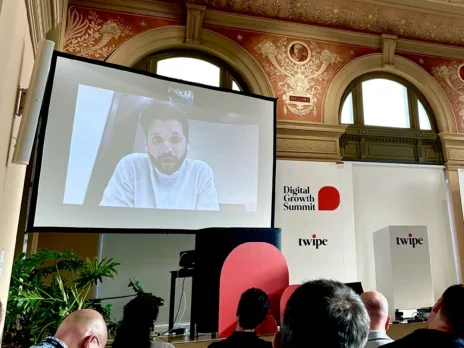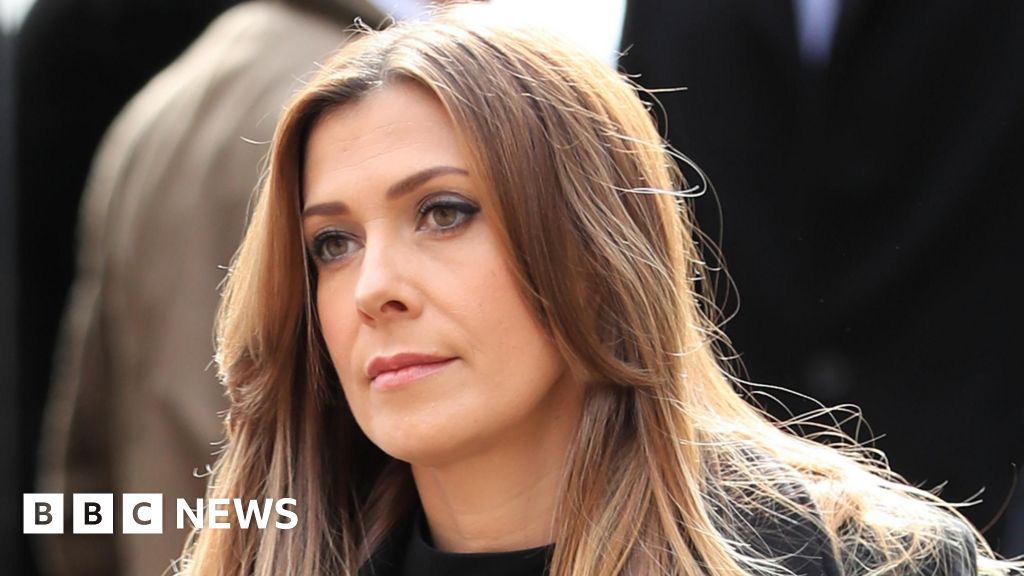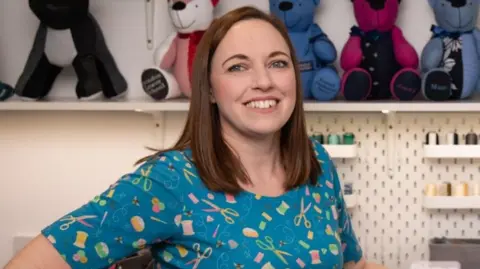The next Conservative leader will be from the right wing of the party.
The surprise elimination on Wednesday of the final moderate Tory candidate in the race — James Cleverly — leaves Tory party members with a choice between Kemi Badenoch and Robert Jenrick.
Both have set out a staunchly right-wing prospectus, proposing a smaller state, a crackdown on immigration, and outlining scepticism about net zero targets.
As leader of the opposition, the winner will hold Sir Keir Starmer to account each week at Prime Minister’s Questions in the Commons — and will hope to lead the Tory party into a general election within the next five years.
Kemi Badenoch

Kemi Badenoch was the bookmakers’ favourite going into the Tory leadership race this summer.
The former business secretary has styled herself as a truth-teller who will deliver difficult messages to the party, which she says needs to rebuild from first principles.
She has said truth, family, citizenship, personal responsibility and equality under the law are the principles that would underpin her leadership.
Allies say she has the most intellectual critique of where the party should go, publishing a 40-page pamphlet during the party conference entitled “Conservatism in Crisis: Rise of the Bureaucratic Class”.
Her contention is that this ballooning group, who inhabit roles linked to the state, is socially intolerant and driving an economic slowdown.
She describes herself as a “net zero sceptic”, has challenged views around the rights of transgender people, and revels in attacking what she proclaims to be “left-wing nonsense”.
Known for her pugilistic style and sometimes brusque manner, her critics say she would cross a road to get into an argument, and wanders too easily into controversy. She says she fights on behalf of her party, not with it.
During the party’s annual gathering she sparked rows with suggestions that maternity pay was “excessive” and that the minimum wage too great a burden on some businesses.
Badenoch, 44, also raised eyebrows by signalling the public may back a move to charge for access to healthcare and suggesting, apparently in jest, that a large number of UK civil servants deserve to be in prison.
A raft of Tory rising stars on the front bench have backed Badenoch during the contest, including former energy secretary Claire Coutinho and former Treasury chief secretary Laura Trott, alongside party grandees such as former Cabinet Office minister Lord Francis Maude.
Born in the UK, she grew up in Nigeria before returning to Britain as a teenager. She studied engineering and worked for private bank Coutts and in a digital role at the Spectator magazine before entering politics through the London Assembly.
Badenoch was first elected to the House of Commons in the Essex seat of Saffron Walden in 2017.
Liz Truss first put her in the cabinet as international trade secretary and women and equalities minister. Rishi Sunak appointed her business secretary.
She ran for leader after Boris Johnson resigned in 2022 and came fourth, a result that gave her the confidence to try again given her low profile going into that race.
Badenoch has two daughters and a son with her husband Hamish, who works for Deutsche Bank.
Robert Jenrick

Robert Jenrick gathered momentum early in the Tory leadership contest, topping the first two MP ballots and impressing colleagues with a slick campaign.
The former communities secretary has focused heavily on immigration, becoming the only candidate vowing outright to quit the European Convention on Human Rights, or ECHR, if he comes to power.
He is also one of only two Tory leadership candidates — the other was Tom Tugendhat — who has called for a concrete ceiling on net inward legal migration to the UK, which he says should be capped at 100,000 people a year.
Jenrick, 42, has said he would reject mass migration, focus on cheap and reliable energy, get Britain building again, cut the size of the state and build a more united country.
He opposes “crazy interim binding targets” on net zero, and has vowed to cut the international aid budget to fund an increase in defence spending to 3 per cent of GDP.
After winning the first two rounds of voting, his momentum had appeared to have stalled, when he lost ground in the third round of voting by Tory MPs on Tuesday.
Tory MPs believed then that his lacklustre speech at the party’s annual gathering in Birmingham last week may have dented his chances.
He also stoked controversy by claiming in a campaign video that Britain’s special forces are “killing rather than capturing terrorists” due to the constraints of the ECHR, raising questions about his judgment.
Jenrick is viewed as a centrist who has tacked to the right in order to curry favour in the race with the party base and MPs. However, some in the Tory fold say he is a natural right winger who kept his true colours hidden during the Coalition years when the party was led by moderate Conservatives.
He backed Remain in the EU referendum, but has since said he would back Brexit if he had his time again.
Last month he told the Financial Times that he believed the Treasury and the UK’s independent fiscal watchdog had been “gaslighting” the British public over the benefits of migration.
Right-wing Tory veterans Sir John Hayes and Mark Francois have backed Jenrick, alongside centrist former health secretary Victoria Atkins.
He won his seat of Newark in a 2014 by-election and joined the government ranks four years later, when Theresa May made him a Treasury minister.
Boris Johnson later made him housing secretary, a job in which he sparked a slew of negative headlines after he approved a controversial planning application submitted by Tory donor Richard Desmond after sitting beside him at a party fundraising dinner.
In 2019 he was one of three rising stars in the Tory party who joined forces to back Johnson for the party leadership — alongside Rishi Sunak and Oliver Dowden.
Friends said he later felt let down when Sunak arrived in No 10 and appointed Dowden as deputy prime minister, but did not give Jenrick a full cabinet role, appointing him immigration minister instead.
Jenrick dramatically resigned from the role around six weeks later, insisted Sunak’s legislation to save his Rwanda deportation plan was too weak to succeed.
He is married to Anglo-Israeli lawyer Michal Berkner, with whom he has three daughters.















































































































































You must be logged in to post a comment Login